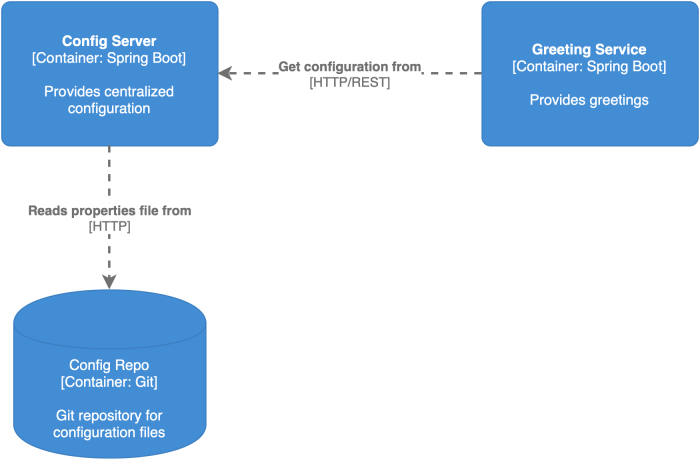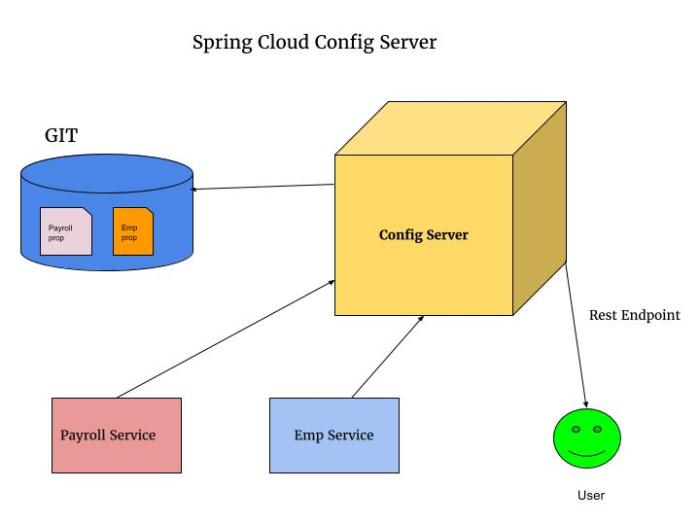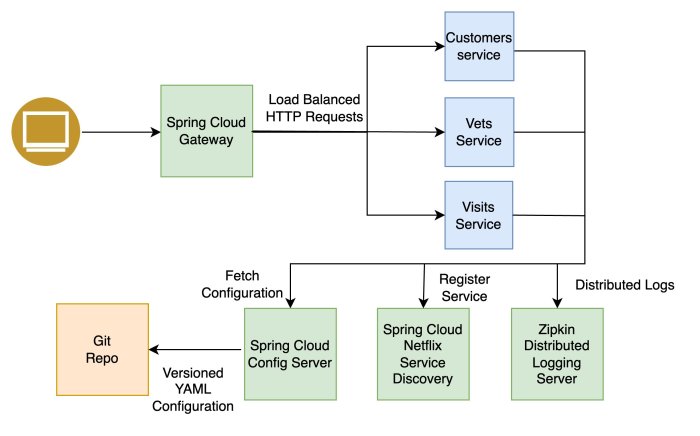Cloud Config Server APIs: Ever wondered how massive cloud infrastructures manage their settings? It’s all about efficient configuration management, and that’s where cloud config server APIs come in. These APIs are the unsung heroes, streamlining the process of deploying, updating, and managing configurations across vast networks. Think of them as the central nervous system for your cloud setup, ensuring everything runs smoothly and consistently.
This deep dive explores the world of cloud config server APIs, covering everything from authentication and authorization to advanced features and integrations. We’ll examine different API types, best practices for security, and strategies for handling errors and scaling your infrastructure. Get ready to level up your cloud management game!
API Authentication and Authorization

Securing a cloud config server API is paramount; unauthorized access could lead to serious breaches and misconfigurations. This section details common authentication methods and explores a robust authorization scheme, focusing on best practices for key management. Think of it as building a high-security vault for your application’s configuration data.API authentication verifies the
- identity* of the client trying to access the API, while authorization determines what actions that client is
- permitted* to perform. These two concepts work together to ensure only legitimate users can access and modify configuration data, maintaining the integrity and security of your entire system.
API Authentication Methods
Several methods exist for authenticating clients accessing a cloud config server API. Choosing the right method depends on factors like security requirements, complexity, and ease of integration.
- API Keys: A simple approach, API keys are unique identifiers assigned to each client. They’re often included in request headers. While straightforward, they can be challenging to manage securely if compromised. Regular rotation and revocation are crucial.
- OAuth 2.0: A widely adopted industry standard, OAuth 2.0 allows clients to access resources on behalf of a user without sharing their credentials directly. It uses access tokens, which have limited lifespans and can be revoked, enhancing security significantly. This is particularly beneficial for multi-tenant environments.
- JSON Web Tokens (JWT): JWTs are self-contained tokens containing claims about the user and their permissions. They’re digitally signed, making them difficult to forge. Verification is relatively simple, making them a popular choice for microservices architectures.
Authorization Scheme Example, Cloud config server api
A well-defined authorization scheme is critical. Consider using a Role-Based Access Control (RBAC) model. This approach assigns users to roles (e.g., “administrator,” “developer,” “viewer”), and each role has a set of permissions defining what actions they can perform on the API.For example:
| Role | Permissions |
|---|---|
| Administrator | Read, write, delete all configurations |
| Developer | Read, write configurations for their assigned projects |
| Viewer | Read-only access to specific configurations |
This granular control ensures only authorized users can access and modify sensitive configuration data. Implementing this would involve checking the user’s role and permissions on each API request.
Securing API Keys and Managing Access Tokens
Protecting API keys and access tokens is paramount. Best practices include:
- Store API keys securely: Never hardcode them directly into your application. Use environment variables or dedicated secret management services.
- Rotate API keys regularly: This minimizes the impact of a compromise. Implement an automated rotation process.
- Revoke compromised keys immediately: If a key is suspected to be compromised, revoke it without delay.
- Use short-lived access tokens: For OAuth 2.0, use refresh tokens to obtain new access tokens without requiring the user to re-authenticate. Set appropriate expiration times.
- Implement rate limiting: This helps mitigate brute-force attacks targeting API keys.
Error Handling and Logging: Cloud Config Server Api

Robust error handling and comprehensive logging are crucial for the maintainability and reliability of any API, especially a cloud config server API which manages critical system configurations. Effective error handling provides informative feedback to clients, enabling them to understand and resolve issues. Simultaneously, detailed logging allows developers to quickly diagnose problems, monitor API performance, and proactively identify potential areas for improvement.Proper error handling involves returning appropriate HTTP status codes along with descriptive error messages.
These messages should be informative enough for developers to understand the cause of the error without requiring access to internal server logs. Logging, on the other hand, captures detailed information about each API request and response, including timestamps, request parameters, response data, and any errors encountered. This data is invaluable for debugging, performance analysis, and security auditing.
Common Error Codes and Meanings
A well-defined set of error codes is essential for clear communication between the API and its clients. Here are some examples of error codes and their corresponding meanings within the context of a cloud config server API:
| Error Code | HTTP Status Code | Description |
|---|---|---|
CONFIG_NOT_FOUND |
404 | The requested configuration was not found. This could be due to an invalid configuration ID or a missing configuration file. |
INVALID_REQUEST |
400 | The request was malformed or contained invalid parameters. The error message should specify the invalid parameter(s). |
PERMISSION_DENIED |
403 | The client does not have the necessary permissions to access the requested resource. This could be due to insufficient authentication or authorization. |
INTERNAL_SERVER_ERROR |
500 | An unexpected error occurred on the server. This should be logged with detailed information for debugging purposes, but the client should only receive a generic error message. |
SERVICE_UNAVAILABLE |
503 | The cloud config server is temporarily unavailable. This could be due to maintenance or an overload of requests. |
Logging API Requests and Responses
Effective logging involves capturing key information about each API interaction. This includes the request method (GET, POST, PUT, DELETE), the request URL, request headers (including authentication tokens), request body (if applicable), the response status code, the response headers, and the response body (potentially redacted for sensitive data). Timestamps are also crucial for analyzing request latency and identifying trends.
A structured logging format, such as JSON, makes log analysis much easier.For example, a log entry might look like this (shown as a simplified example, actual implementation would depend on chosen logging library):
“timestamp”: “2024-10-27T10:30:00Z”, “method”: “GET”, “url”: “/configs/12345”, “status_code”: 200, “response_time_ms”: 150, “user_id”: “user123”
Designing a Logging Strategy
A robust logging strategy should consider different logging levels (e.g., DEBUG, INFO, WARNING, ERROR) to categorize log messages based on their severity. This allows for filtering and prioritizing log messages during debugging and monitoring. Logs should be stored in a centralized location, such as a dedicated logging service (e.g., ELK stack, Splunk) or a cloud-based logging solution (e.g., CloudWatch, Google Cloud Logging).
Log rotation and archiving strategies are also essential to manage storage space and prevent log file bloat. Regular review of logs is important to identify trends and potential issues. The logging strategy should also account for security and privacy considerations, ensuring that sensitive data is appropriately masked or redacted before logging.
Check what professionals state about cloud computing uses server virtualization true or false quizlet and its benefits for the industry.
Advanced Features and Integrations
Cloud config server APIs are no longer just about pushing configurations; they’re evolving into powerful management hubs. Beyond the basics, many offer sophisticated features and seamless integrations that dramatically streamline DevOps workflows and improve operational efficiency. Let’s dive into some key advanced capabilities and explore how they connect with other essential tools.
Policy Management Capabilities
Robust policy management is a crucial advanced feature. These APIs often allow administrators to define and enforce configuration rules, ensuring consistency and compliance across environments. For example, a policy might mandate specific security settings for all deployed applications or restrict the use of certain outdated software versions. This granular control minimizes risk and reduces the chance of configuration drift, a common source of operational headaches.
Centralized policy management reduces the administrative burden of managing configurations across many systems and simplifies auditing.
Auditing and Logging
Comprehensive auditing is essential for security and compliance. Advanced cloud config server APIs typically provide detailed logs of all configuration changes, including who made the changes, when they were made, and what changes were implemented. This audit trail is vital for troubleshooting, security investigations, and regulatory compliance. Some APIs even integrate with centralized logging and monitoring systems, providing a single pane of glass for observing all configuration activity across your infrastructure.
This capability allows for faster incident response and improved security posture.
Integration with Monitoring Systems
Integrating a cloud config server API with a monitoring system enables real-time visibility into the health and performance of your configurations. This integration allows for proactive identification of configuration issues before they impact services. For instance, if a monitoring system detects a performance degradation, it can query the config server API to check if a recent configuration change might be the root cause.
This allows for rapid diagnosis and remediation. Imagine a scenario where a database server’s performance drops. The monitoring system alerts you, and by querying the config server’s API, you can see that a recent configuration change inadvertently altered resource allocation. You can then swiftly roll back the change and restore performance.
Comparison of Integration Capabilities: Two Example APIs
Let’s compare the integration capabilities of two hypothetical cloud config server APIs: “ConfigPro” and “ConfigCloud.” ConfigPro boasts extensive built-in integrations with popular monitoring tools like Prometheus and Datadog, providing pre-built connectors and streamlined workflows. ConfigCloud, on the other hand, relies more on a flexible RESTful API, offering greater customization but requiring more development effort to integrate with specific monitoring systems.
While ConfigPro offers ease of use, ConfigCloud’s flexibility allows integration with niche or custom monitoring solutions that ConfigPro might not directly support.
Integration Flowchart: Cloud Config Server API and Monitoring System
The flowchart below depicts the integration process.[Descriptive Flowchart]The flowchart would begin with a “Monitoring System” box. An arrow would point to a “Performance Degradation Detected” box. Another arrow from this box points to “Query Cloud Config Server API” box. From there, an arrow leads to a “Retrieve Configuration History” box. Another arrow then points to a “Analyze Configuration Changes” box.
The next arrow goes to a “Identify Potential Root Cause” box. The final arrow points to an “Alert/Remediation” box. This box shows the path to either a “Rollback Configuration” or “No Action Needed” decision.
Scalability and Performance

A cloud config server API needs to be built for speed and resilience. Think of it like this: your API is the heart of your system, pumping out configuration data to keep everything running smoothly. If it slows down or crashes, the whole operation grinds to a halt. Therefore, designing for scalability and high performance is crucial from the very beginning.
This involves careful consideration of architecture, database choices, and proactive performance monitoring.This section details strategies for ensuring the scalability and performance of a cloud config server API, focusing on optimization techniques, bottleneck identification, and a robust performance testing plan. We’ll cover practical approaches to minimize latency and maximize throughput, allowing your API to handle a growing number of requests efficiently and reliably.
Strategies for Ensuring Scalability
To handle increasing loads, we need a system that can grow gracefully. This means adopting a microservices architecture, where the API is broken down into smaller, independent services. Each service can be scaled independently based on its specific needs. For instance, the service handling user authentication might need more resources than the service retrieving configuration data. Using containerization technologies like Docker and Kubernetes allows for easy deployment and management of these microservices, enabling horizontal scaling – adding more instances of a service to handle increased load.
Load balancing distributes incoming requests across these multiple instances, preventing any single instance from becoming overloaded.
Techniques for Optimizing API Response Times
Reducing latency is key to a responsive API. Caching frequently accessed configuration data is a powerful technique. A well-implemented caching strategy, perhaps using Redis or Memcached, can significantly reduce database load and speed up response times. Database optimization is also crucial; using appropriate indexing and query optimization techniques can dramatically improve database query performance. Furthermore, efficient data serialization formats like Protocol Buffers or Avro can reduce the size of the data transmitted, further lowering response times.
Finally, using asynchronous processing for non-critical tasks can prevent blocking operations from slowing down the main thread.
Potential Bottlenecks and Solutions
Several points can become bottlenecks. A poorly performing database is a common culprit. Solutions include database sharding (splitting the database across multiple servers), optimizing database queries, and using a read replica for read-heavy operations. Another potential bottleneck is the network. Using a Content Delivery Network (CDN) to cache static assets closer to users can reduce network latency.
Insufficient server resources (CPU, memory, I/O) can also create bottlenecks; scaling up server instances or optimizing code to reduce resource consumption addresses this. Finally, inefficient code can also be a major bottleneck; regular code reviews, profiling, and performance testing help identify and address such issues.
Performance Testing Plan
A comprehensive performance testing plan is essential. This involves using tools like JMeter or Gatling to simulate a high volume of requests to the API. Tests should cover various scenarios, including normal load, peak load, and stress testing. Metrics such as response time, throughput, and error rate should be monitored. The testing should cover different API endpoints and functionality to identify any performance bottlenecks under different load conditions.
The results will inform capacity planning and guide optimization efforts. For example, testing might reveal that a specific endpoint is a performance bottleneck under high load, prompting further optimization of that particular endpoint or underlying database queries. This iterative approach, combining testing and optimization, is crucial for maintaining high performance as the API scales.
So, there you have it – a comprehensive look into the powerful world of cloud config server APIs. From securing your configurations to optimizing performance, mastering these APIs is key to building robust and scalable cloud environments. By understanding the core concepts, best practices, and advanced features, you can confidently navigate the complexities of cloud infrastructure management and build systems that are both efficient and secure.
Now go forth and conquer those clouds!
General Inquiries
What’s the difference between a cloud config server API and a regular API?
A cloud config server API specifically focuses on managing configurations within a cloud environment. Regular APIs might handle various tasks, but a cloud config server API’s sole purpose is configuration management, making it specialized for that task.
How do I choose the right cloud config server API for my project?
Consider factors like scalability needs, existing infrastructure, security requirements, and the level of integration with your CI/CD pipeline. Evaluate the features, ease of use, and community support offered by different APIs.
Are there open-source cloud config server APIs available?
Yes, several open-source options exist, offering flexibility and customization. However, carefully evaluate their maturity, community support, and security before implementing them in production.
What are the common security risks associated with cloud config server APIs?
Unauthorized access, API key compromise, and insecure configuration management practices are major concerns. Implement robust authentication, authorization, and logging mechanisms to mitigate these risks.